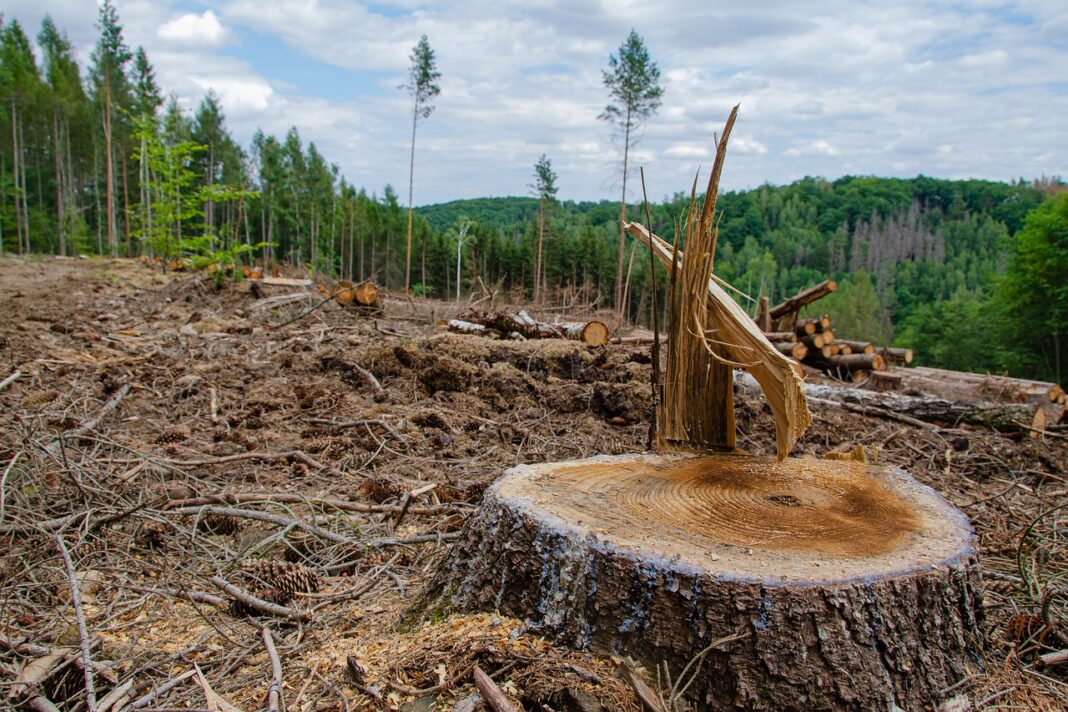Few people realize how few trees currently exist on planet Earth. The landscape around us has changed a lot, urbanization has taken its toll on it. Everywhere there are only cities, fields, houses, landscaped plots, parking lots or other areas where there are no trees. Back in 1960, each person had 1.4 hectares of forest, today it is only 0.5 hectares. Scientists from the Center for Biodiversity and Climate Change, Forestry and Forest Products Research Institute (FFPRI) in Japan came up with this shocking finding.
In 60 years, 81.7 million hectares of forests have disappeared
Scientists examined the loss of trees over the past 60 years, specifically from 1960 to 2019. During this period, the Earth lost 81.7 million hectares of forests, with forest loss (437.3 million ha) outweighing forest gain (355.6 million ha). Forests that represent an area 10% larger than the area of Borneo have disappeared. The paper “Spatiotemporal pattern of global forest change over the past 60 years and the forest transition theory” has been published in the journal IOP Science.
The team was led by Ronald C. Estoque, PhD, an environmental scientist at FFPRI. They drew on global land use data to track the change in global forest cover.
“The continuous loss and degradation of forests affect the integrity of forest ecosystems, reducing their ability to generate and provide essential services and sustain biodiversity. It also impacts the lives of at least 1.6 billion people worldwide, predominantly in developing countries, who depend on forests for various purposes,” the team explains in the paper.

The greatest loss of forests is in low-income countries
It found that the greatest loss of forests is recorded in low-income countries. These results, they explain, support the forest transition theory: the observation that “as income rises within poor countries, deforestation increases up to a certain point, but then begins to decrease,” according to Dartmouth’s Social-Ecological Systems Meta-Analysis Database.
This finding does not mean that only poor people are to blame, but especially rich people. Many rich people and companies will have forests cut down in poor countries so that their homelands don’t have to be cut down. So rich countries often finance logging in poor countries. We can see something like this in South America, for example. Poor people cut down forests to secure financial income.
“Despite this spatial pattern of forest loss occurring primarily in the less developed countries, the role of more developed nations in this said forest loss also needs to be studied more deeply. With the strengthening of forest conservation in more developed countries, forest loss is displaced to the less developed countries, especially in the tropics,” the paper notes.

Most forests are cut down in tropical regions
Most forests are cut down in tropical regions, which have the greatest biodiversity. Along with the increasing number of people, forests are constantly decreasing. Forests are important for the whole planet, they absorb carbon dioxide, produce oxygen, provide shelter for animals, retain water and also take care of the climate of the area. Shrinking forests have a huge impact on the global climate. When forests disappear, a large number of animal and plant species that live in the area disappear with them.
“Today, monitoring of the world’s forests is an integral part of various global environmental and social initiatives, including the Sustainable Development Goals (SDGs), the Paris Climate Agreement and the Post-2020 Global Biodiversity Framework. To help achieve the goals of these initiatives, there is a profound need to reverse, or at least flatten, the global net forest loss curve by conserving the world’s remaining forests and restoring and rehabilitating degraded forest landscapes,” the authors conclude.

The problem needs to be solved quickly
How to solve the problem? It is necessary to address the socio-economic situation in poor countries as soon as possible. Local residents need to be supported so that they are not dependent on logging and can have another source of income. To help address the displacement of forest loss to the lower income countries in the tropics, higher income nations need to reduce their dependence on imported tropical forest products. If the negative process of forest loss is to be reversed, it is necessary to solve the problem and also to start planting new forests in the areas where they have been lost.
Source: https://iopscience.iop.org/article/10.1088/1748-9326/ac7df5
Image credit: FFPRI, Pixabay.com















